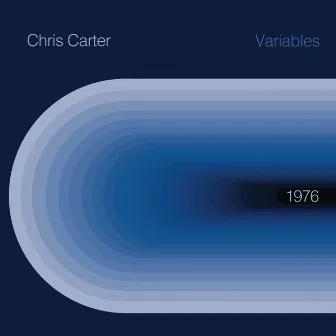Performance
Monthly Listeners
Current
Followers
Current
Streams
Current
Tracks
Current
Popularity
Current
Listeners 2,980
Top Releases
View AllBiography
British electronic musician Chris Carter is best known as a co-founder of the pioneering industrial group Throbbing Gristle. His synthesizer work provided some of the most rhythmic and melodic elements of the group's music, foreshadowing much of the more accessible industrial and techno which would emerge during the '80s and '90s. Following TG's breakup, Carter and bandmate/partner Cosey Fanni Tutti formed the prolific, influential darkwave/synth pop duo Chris & Cosey (later known as Carter Tutti), in addition to making more experimental soundscapes as Creative Technology Institute (or CTI). Carter's solo recordings include the Gristle-esque industrial album The Space Between (originally issued as a cassette in 1980), the ambient techno full-length Small Moon (1999), and 2018's Chemistry Lessons, Vol. 1, which was influenced by the BBC Radiophonic Workshop's groundbreaking work from the '60s. Aside from his numerous recordings, Carter is well known for his electronics expertise, and has created and designed effects units and sound generators such as the Gristleizer and the Dirty Carter Experimental Sound Generating Instrument. He is also a journalist, particularly for music technology magazine Sound on Sound, as well as a photographer and graphic designer. Born in Islington, London, England on January 28, 1953, Carter became enchanted with high-tech equipment early in his youth. When he was only a boy, Carter spent hours playing with a tape deck; his father would record family conversations and add sound effects to them, even changing speeds. At the age of 13, Carter fell in love with mixing electronic sounds. Carter joined a garage band called the Dragsters in 1967. A year later, he took drugs and saw Pink Floyd perform at a dive in North London. The group's visual presentation and acid-damaged pop left Carter spellbound. Inspired, he formed Orpheus Lites with his friend Chris Panayiotou, providing local acts with Pink Floyd-ish psychedelic light shows. Orpheus Lites eventually turned into an integral part of their biggest client, the outfit Willa. Carter joined Willa as a keyboardist, but he left in 1974. In 1975, Carter made his solo debut, performing at Thurrock Technical College in England as Waveforms, utilizing synthesizers and keyboards. He then met future bandmates Genesis P-Orridge and Cosey Fanni Tutti, both of whom were in COUM Transmissions, a performance art ensemble that disgusted and disturbed English audiences by torturing their genitals and licking their vomit on-stage. With the addition of Carter and Peter Christopherson, COUM Transmissions evolved into industrial pioneers Throbbing Gristle. Carter worked as a sound engineer for ABC News, and constructed their London radio studio in 1976, but he turned down an offer to build another studio in Rome so he could focus on his involvement with TG. In 1980, Carter released his first solo album, The Space Between, on the group's Industrial Records imprint. Throbbing Gristle broke up a year later, and Carter started collaborating with Fanni Tutti as Chris & Cosey, signing to Rough Trade and debuting with the 1981 full-length Heartbeat. They introduced their more experimental CTI project with the Elemental 7 video, released by Cabaret Voltaire's Doublevision label in 1983, and subsequently issued as an LP. Chris & Cosey, meanwhile, left Rough Trade during the middle of the decade and released music on Canada's Nettwerk, Belgium's Play It Again Sam, and America's Wax Trax! They also created their own record label, Conspiracy International, which issued Carter's second solo album, Mondo Beat, in 1985. During the late '80s, Chris & Cosey participated in TGT (The Genetic Terrorists), an industrial dance group which also included Lustmord. Wax Trax! released their singles "Machine Gun" and "Revo," followed by 1990 full-length White Stains. Carter entered the journalism field in the '90s, writing music reviews and articles about technology and musical gear. He also designed album covers, posters, and other visual works with Fanni Tutti. He resumed solo performances in 1995, and issued two more solo albums, Disobedient and Small Moon, by the end of the decade. Caged, a collaboration with Ian Boddy, appeared on the DiN label in 2000. Also that year, CTI began releasing a series of Electronic Ambient Remixes releases, consisting of reworked versions of previous Carter and TG recordings. In 2003, Carter and Fanni Tutti retired the Chris & Cosey moniker and became known as Carter Tutti. Throbbing Gristle also became active again, recording and releasing three albums in addition to performing numerous concerts in Europe and America. However, TG dissolved in 2010 when P-Orridge suddenly left the group mid-tour, and Christopherson passed away shortly after. In 2012, the re-activated Industrial Records released Desertshore/The Final Report, a re-imagining of Nico's 1970 album Desertshore, conceived by Christopherson before his death, completed by Carter and Fanni Tutti, and credited to X-TG (as P-Orridge was not involved with the project). Carter and Fanni Tutti teamed up with Factory Floor's Nik Colk Void to form techno trio Carter Tutti Void, debuting with 2012's Transverse, followed by 2015's f(x). Additionally, Carter Tutti revisited their past work with 2014's Remix Chris & Cosey and 2015's Carter Tutti Plays Chris & Cosey. Throughout the decade, Carter remixed tracks by numerous artists, including Liars, Erasure, Perc, and Solvent. He also worked on solo material, and in 2018, Mute released his album Chemistry Lessons, Vol. 1. Later in the year, the same label issued Miscellany, a box set containing three of Carter's solo albums (Mondo Beat, Disobedient, and Small Moon) in addition to a disc of previously unreleased recordings dating from the '70s (later issued individually as Archival Recordings 1973-1977). Mute reissued Electronic Ambient Remixes One and Three in 2021; the former included ambient dub reworkings of Carter's early solo material, while the latter was based on rhythms from Throbbing Gristle tracks. ~ Paul Simpson & Michael Sutton, Rovi













